How To Install A Toilet Flange Extender [DIY & In A Few Easy Steps]
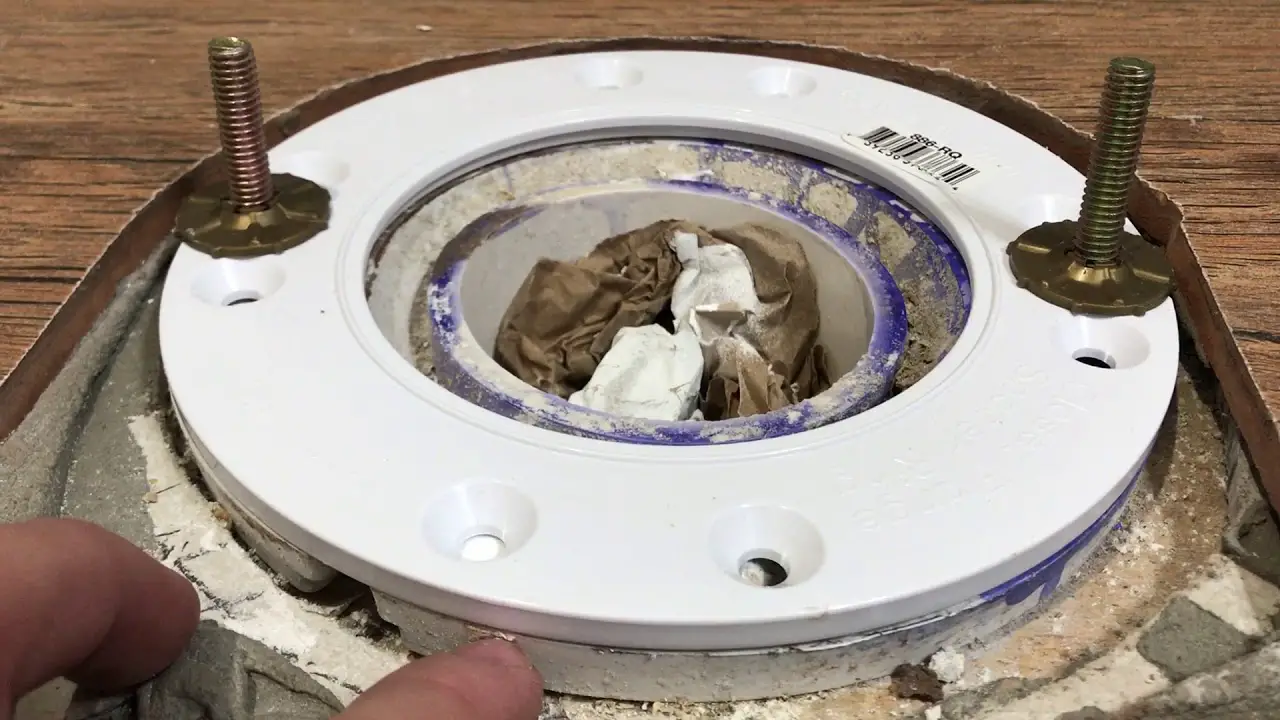
When a house is built, one of the very first components installed after the foundation are the drain connections. The toilet’s connection is one of the critical parts of this system.
Since it is installed so early in the construction process, a lot can change between the installation phase and the finished product.
Remodeling adds a new layer that can further complicate a toilet install. Sometimes old fixtures can break due to corrosion or inferior materials.
If a toilet can not seat properly onto the flange, there is a risk of it leaking. A flange extender is a device you can purchase to make sure the install is perfect.
In this guide, we’ll help you learn how to install a toilet flange extenders, no matter the situations.
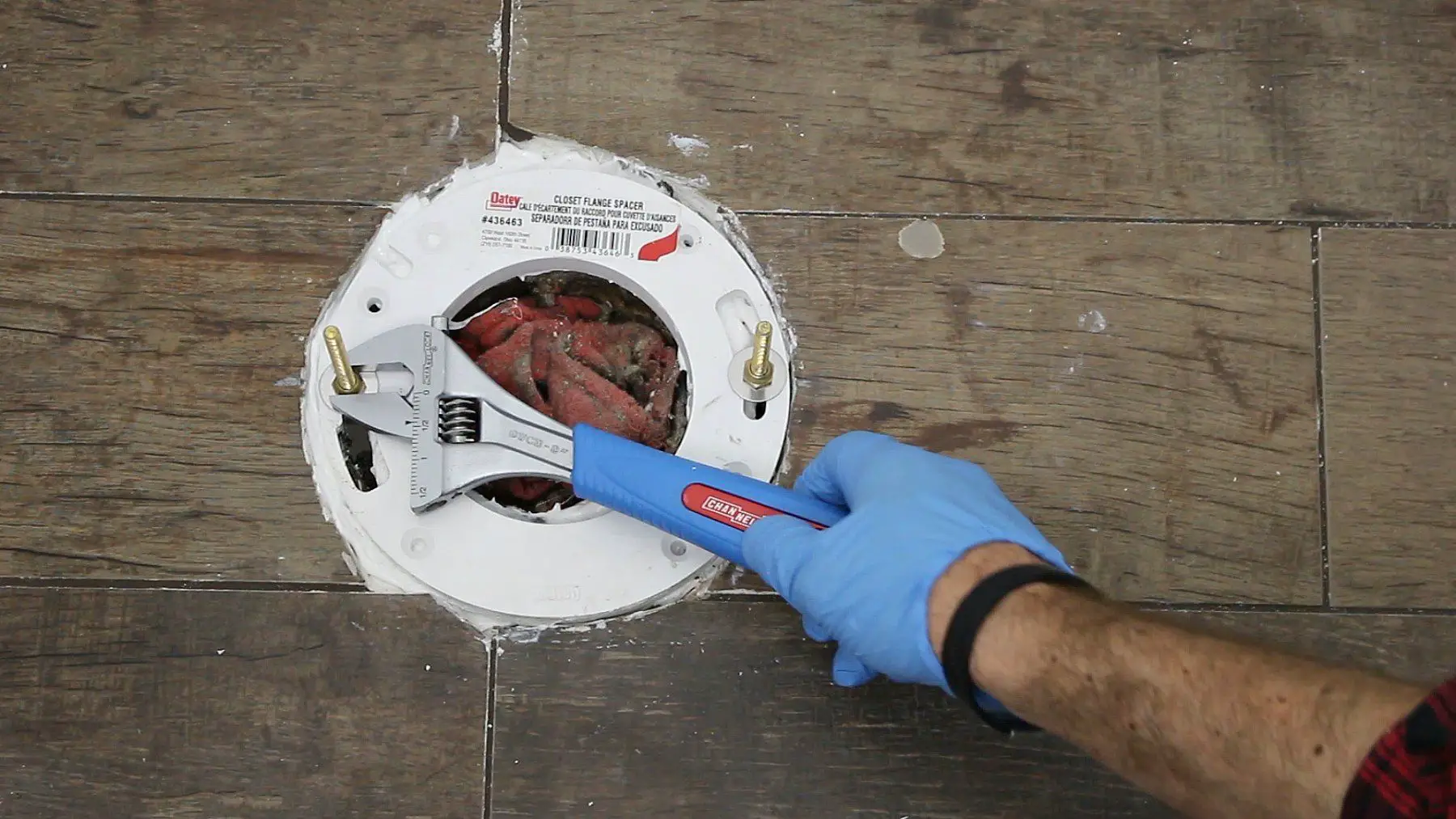
The toilet flange is the metal or plastic disk that the toilet bolts to. A toilet flange extender helps minimize the difference between the normal toilet mounting height and the recessed flange.
Such excess space occurs during bathroom renovation projects. A toilet flange extender can fill the space between the old flange and the new floor, eliminating the risk of leaks or improper fitment.
The bottom of the toilet flange should be level with the top of the finished floor. That way the bottom of the toilet can create the best seal.
There are a few circumstances where that may not be true, and you will actually need a spacer or extender.
Here are some scenarios:
The most commonly used extenders fall into one of the following categories. Choosing which one is best for you will depend on three things:
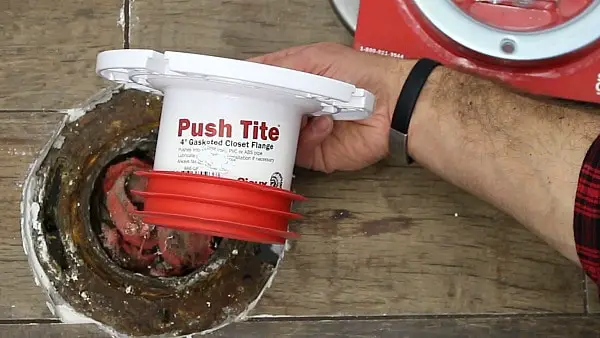
Rubber “waxless” seals can work great if the existing flange is in good condition and the space is less than an inch.
They work just like a wax ring to seal the toilet to the bend. The large gasket adds a small amount of rise to the flange.
Slide the T-bolts into the existing flange as normal. Line up the holes in the rubber gasket and slide it down over the bolts.
Install the toilet on top of the rubber seal as normal without a wax ring.
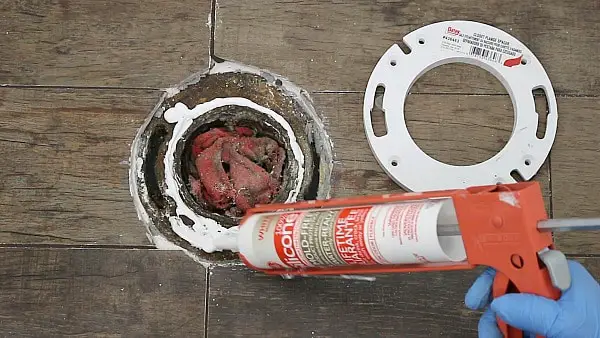
Plastic flange extenders have a new flange attached to a small length of pipe. The pipe has a gasket to seal to the inside of the existing flange. Spacers are used to level the new flange with the new floor height.
Since the spacers can be stacked indefinitely, a plastic extender can raise the flange more than two inches.
Most plastic flange extenders only work with plastic pipes (3” or 4”) so be aware that if you still have cast iron plumbing you may have to special order the gasket.
Use a level stretched across the opening to measure the distance between the finished floor and the top of the old flange. This will tell you what size spacers you will have to purchase and use.
When you have the spacers, place them on the existing flange and slide the flange extender down through them, twisting slightly for a good fit.
Make sure the T-bolt slots are parallel to the wall. Use the included screws to bolt down the extender to the old flange or the floor.
After that, simply install and level the toilet as normal using a rubber seal or wax ring.
More expensive hybrid extenders combine the wax-less rubber seals with robust plastic or metal flanges.
These hybrid extenders usually have feet that protrude down to the old surface instead of spacers. That can be very beneficial when the old flange is deformed or no longer able to hold bolts.
Since these are some of the newest devices, there is no standard design yet. Most often, you will need to install a mounting plate with screws to the floor.
The new flange and gasket will lock into the mounting plate and seal against the existing pipe, without needing the help of the old flange.
The new flange may or may not have additional bolts or screws that hold it to the new plate. The rubber flange is integrated into the design. Simply install the toilet with the provided T-bolts, without a wax ring.
Sometimes circumstances won’t allow you to use an extender effectively. If the old flange is broken or in disrepair, you may not have the ability to mount the extender correctly.
If you have a very old system you may not be able to purchase the correct size extender for your pipes.
Should that be the case, you can install a plastic flange extender that has no gasket onto a wax ring (instead of the plastic spacers). Different manufactures will have different mounting instructions.
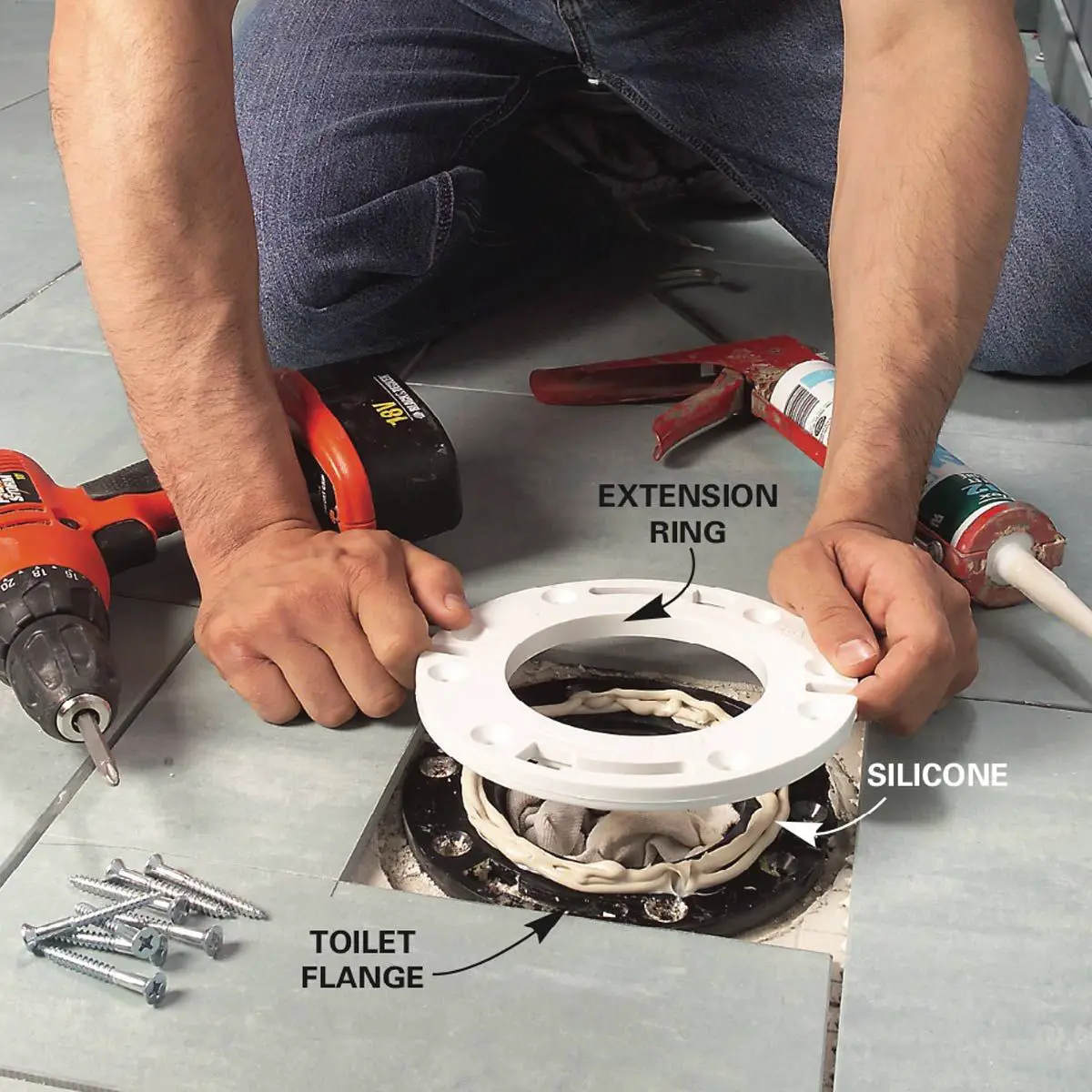
It is important to read the labels and make sure that the kit you buy is the one you need for your situation.
The most common types of flange extenders meant to be used with wax rings have grooves cut into the bottom.
Such grooves help seal against the wax for a very tight fit. The wax will fill cracks or damage in the old flange and ensure a good seal.
When the new extender is fixed in place install the toilet as normal using a waxless seal or second wax ring.
Some people wanting to do things easily and inexpensively will use two wax rings to make up the height difference between an exiting flange and a new surface.
This leads to two issues:
There are larger wax rings for purchase if you need a little bit of extra material to ensure a great fit. However, you should not need one if you have a properly installed flange extender.
Flange Extenders will save you from what would otherwise be a very frustrating installation.
Improper flange height can lead to wobbly toilets, difficult to work with bolts, or in the worst-case scenario, damaging leaks.
Avoid all of those problems by spending the few extra minutes to install these devices. This way, you can be confident that you will be resting in comfort.